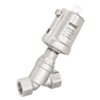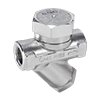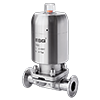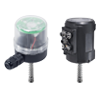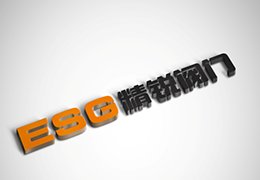Valve Knowledge
Industry Information
2021-09-01Aiming at the problems of large flow resistance and many residues in the three-way angle valve that need to be solved urgently in the process of using the automatic conveying system in the printing and dyeing industry , ESG Jingrui Valve has specially developed a new product-a low flow resistance three-way angle valve.


Traditional three-way angle valve (left) and ESG low flow resistance three-way angle valve (right)
What are the highlights of ESG low flow resistance three-way angle valve?
1. The internal structure is more perfect, which effectively reduces the flow resistance by 80%, and the power consumption is greatly reduced.
2. Unique design, no material in valve stem displacement, low residue, and 50% reduction in energy consumption for cleaning pipelines.
These two highlights have extraordinary value and significance for empowering the automation of the printing and dyeing industry, energy saving and emission reduction, and environmental protection .
Only by truly solving customer pain points and difficulties can we better serve customers. ESG Elite Valve will launch new products based on market demand and user demand every year.
How was the ESG low flow resistance three-way angle valve born?
Industrial automation and intelligence, interconnection and integration are the current general trend. The auxiliary and dye automatic conveying system in the printing and dyeing industry uses a digital and intelligent central control system to accurately measure and accurately convey the dye and auxiliary agents according to the production process. The whole production process is controlled by computer, and only need to manually control the computer. The system has obvious advantages: high production efficiency, labor liberation, energy saving and environmental protection, reduction of back-dyeing rate, improved product quality, lower dyeing cost, and significantly improved first-time dyeing qualification rate.
Various additives and dye delivery switching are mainly realized by controlling the valve, which plays a very important role in the whole system.
The ESG team learned from in-depth communication with customers and many on-site visits and investigations that the current printing and dyeing industry in the process of using automatic conveying systems, the problems that urgently need to be solved are the large flow resistance and many residues of the three-way angle valve.
ESG R&D engineers repeatedly simulated the operating conditions, and after repeated scrutiny and unremitting efforts, they finally designed and developed a new product with ultra-low flow resistance—ESG low flow resistance three-way angle valve. Many experiments and even small-scale practical applications proved that ESG Low flow resistance three-way angle valve can effectively improve flow resistance, residue and other problems.
What is the valve flow resistance coefficient?
The flow resistance coefficient of the valve depends on the size, structure, and cavity shape (turning, expanding, shrinking) of the valve product. Each component in the valve body cavity can be regarded as a component system that produces resistance. The change of resistance of any component in the system will cause the change or redistribution of resistance in the entire system, which means that the medium flow affects each pipe section. Therefore, the pressure loss in the valve is approximately equal to the sum of the pressure losses of the various components of the valve.
ESG people will continue to forge ahead, continue to deeply understand and understand customer needs, uphold the values of using conscience, casting conscience products, and being a conscience enterprise , determined to build industry benchmarks, and create value for customers, while actively promoting industry development and progress.


